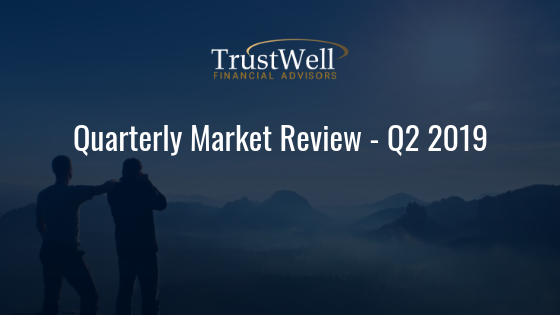
TrustWell’s Quarterly Market Review: Q2 2019
July 1, 2019
Understanding Inflation
September 1, 2019By Chris Daunhauer
Investing Basics
The fundamental action in investing is simple – deferring consumption that we could do today so that we will have more options at some point in the future. When we invest (or when we continue to hold investments we have purchased in the past) we are acting on the belief that having a larger amount of money in the future is better or more valuable to us than having whatever that same money could purchase now.
When we save and invest (that is, when we choose to NOT spend all of the money that we have now) we are choosing to forego receipt of whatever items or experiences our money could purchase today in hopes of a greater payoff at some future date; a greater payoff that we earn over time by our patience and by our risk taking.
But doing so isn’t easy, at least for most people. It never has been and it never will be.
Writing in the early years of the Great Depression, when both household incomes AND the prices of promising investments were very low, economist Irving Fisher saw the issue clearly…
The problem…is entirely a problem of spending and investing, of deciding between various possible…small but immediate enjoyments and relatively large but deferred enjoyments. There is an eternal conflict between the impulse to spend and the impulse to invest. The impulse of a man to spend is caused by his impatience to get enjoyments without delay, and his impulse to invest is caused by the opportunities to obtain by delay relatively more enjoyment either for himself or others.
My wife and I experience this conflict (occasionally, but thankfully not eternally) in our home. One of us may remind the other that “Every dollar spent is one that cannot be invested.” And the other will respond with an equally true “Yes, but every dollar invested is one that cannot be spent.”
There will always be something to buy now. And there will always be a reason to save. Spending too much is foolish. Saving too much is also foolish. Knowing when and how much we will need for various things at some future dates is essential to our making good spending vs investing decisions.
During each month, my wife and I spend most of our income on a host of small but immediate enjoyments – food, gasoline, insurance, electricity, charitable giving, property taxes, entertainment, toothpaste, theatre tickets, cell phone service, etc. And during those same months we also invest some of our income for multiple large but deferred enjoyments – the next roof on our house, income in retirement, college education for family members, our next car, etc.
We don’t invest the same amount of money for each of those future enjoyments. And we don’t invest in the same way (nor in the same account) for each of those future enjoyments. We have buckets. Buckets and buckets, you might say. And that bucket system works well for us.
The Bucket System
We’ve found that having multiple buckets (each with a label, a timeline, and an investment strategy) helps us stay organized, disciplined, and confident.
Our “emergency fund” bucket has been full for a while now. We continue to hold it, but we don’t put any new money into it unless we have had to tap it for some emergency. Some of this bucket is in currency but most of it is in a money market mutual fund with check-writing privileges. The timeline for this bucket is very, very short. We may need that money tomorrow, so we invest it for liquidity, stability, and easy access.
Our “income in retirement” bucket receives new investments from our monthly income every month. It’s in tax-advantaged accounts whose balances go up and down with the markets. It is our goal that my wife will be drawing from this bucket well into her 90’s and long after I am gone – because we have a long timeline for the contents of this bucket, we invest it for growth more than stability.
Our “next roof on the house” and our “next car” and our “next big vacation” buckets receive new investments from our monthly income most every month. They are in FDIC insured savings accounts at our local credit union or in FDIC insured savings accounts at our web bank. Our timeline for those is relatively short, so we invest the dollars for those buckets for stability more than growth.
Our “college for the next generation of our family” buckets receive new investments from our monthly income once in a while but not on any set schedule. These buckets are 529 plan accounts set up for each of our younger nephews and nieces. Our timeline for those is much shorter, so we invest the dollars for those buckets for stability more than growth. We’ve gone full cycle with several of those buckets – opening the account, funding it over multiple years and watching it grow…. Then distributing the account over several years to help pay tuition, supplies, and other expenses, and then (when the balance reaches zero) closing the account.
We have several other buckets, each with a timeline that governs how its contents are invested. It’s a system that works well for us. And one that we’ve helped many clients set up for themselves. Let us know if you find this interesting. We can help you do the same.




